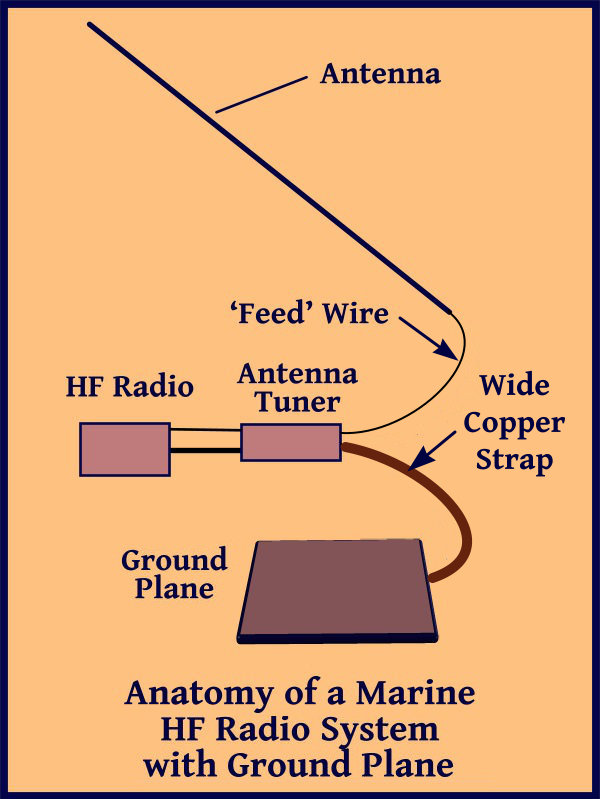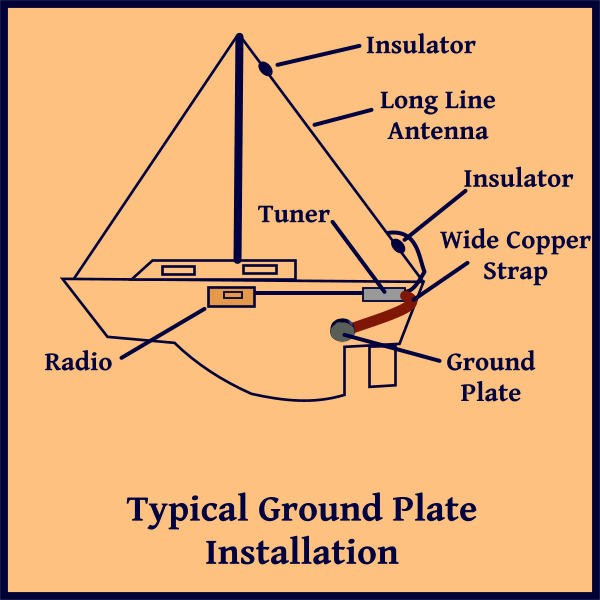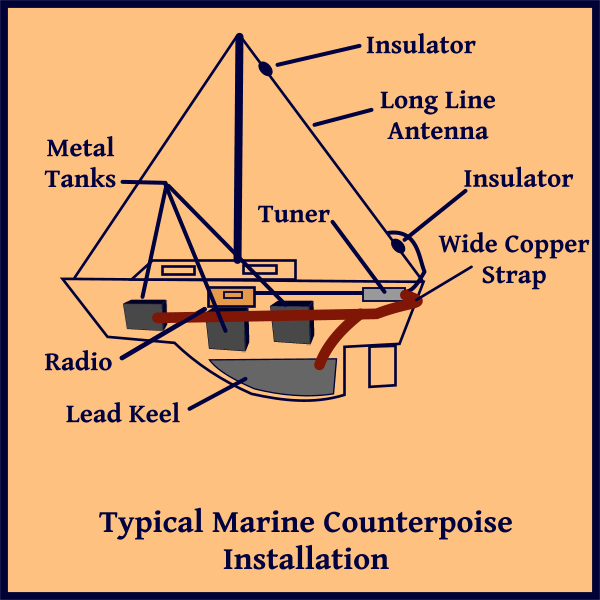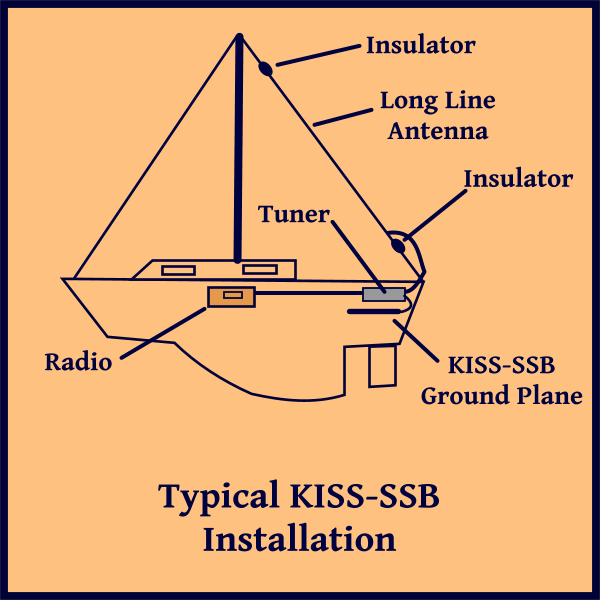The Blue View - HF Radio Ground Systems
/In the last Blue View, I talked about a typical marine HF radio setup, consisting of the radio, an automatic antenna tuner and a long line antenna. As I mentioned, the wire of the antenna is only half of the antenna. To transmit any distance, a good ground plane or counterpoise is also needed. On a land based antenna, the earth is sometimes used as the ground plane, but often a network of wires is run radially out from the base of the antenna, and this type of ground system is called a counterpoise. On a boat, the seawater acts as a great ground plane as long as there is a good connection between the antenna ground and the water.

If the boat is steel, all that needs to be done is to connect the antenna ground to the hull. I'm not sure whether the hull would be classified a counterpoise or a good ground connection. More likely, it is some of both.
On plastic or wooden boats, making a ground connection or counterpoise is slightly more complicated. One method is to attach a large ground plate to the outside of the hull under the water line. It is held in place with large bolts through the hull, then the antenna ground is connected to it using a wide copper strap.

A variation of this is to use a copper strap to connect the ground to one or more bronze thru-hulls. This method is most effective if the thru- hull is located close to the antenna ground, ideally 3-4 feet, but a maximum of 10-15 feet, and the conductor to make the connection is a wide – 3” or more – copper strap. Gordon West, arguably the foremost expert on marine radios, is a proponent of this system.
Another method is to construct a counterpoise by running as many copper straps as possible from the antenna ground, and connecting metal tanks, lead keels and other various metal objects together. Steel lifelines, stanchions and even the mast can be included. This can be a very effective counterpoise, but it is difficult to add all that copper. In addition, since copper and seawater don't go together well, the copper should be protected from corrosion, especially anywhere that the copper strap might come in contact with seawater – like the bilge for example. Some installers encapsulate the copper straps in epoxy and bond it to the hull. We also saw one boat that had a blister problem, and was having the gel coat stripped. Before the new epoxy barrier coat was applied, they bonded a copper mesh to the hull. Unfortunately, we didn't keep in touch with the owners, so we don't know how well the counterpoise worked nor whether there were any long term bonding problems.

A third method is a commercial product, the KISS_SSB, that uses a number of wires of various lengths bundled together and connected to the antenna. The wires are all contained in a flexible tube about the size of a garden hose. The manufacturer claims that the various lengths of wire are finely tuned to make sure the radio transmits well on all the marine and HAM frequencies between 2Mhz and 28 Mhz. It is somewhat costly ~$150, but very easy to install. A heavy wire is used to connect the wires to the antenna ground, and then the bundle of wires can be routed under the cabin sole or in a lazarette locker. The manufacturer's website has lots of endorsements, and those of our friends who have installed them claim their transmission ability has improved. Other knowledgeable experts (whose opinions I respect, BTW) insist that the device can't possibly work as claimed. There are several forums devoted to the topic, resulting in a number of heated discussions between the proponents and the detractors. The only performance testing I've seen was done by John (KA4WJA) on the s/v Annie Laurie. He used a spectrum analyzer to measure the the return loss/VSWR/resonance of a transmitter equipped with the KISS-SSB counterpoise as the transmitter was swept throughout the frequency range of 1.5Mhz to 28.5Mhz. His conclusion was that it would probably work great on three or four frequencies and have a marginal performance throughout the rest of the range. His opinion: “If you just grab some wire out of a dumpster, cut it into a few random lengths (between 12' and 35'), attach a ring terminal to the end of the group of wires...you HAVE made an antenna counterpoise for FREE that works as well as (or better than) the KISS....and if you need to buy some wire, it'll cost you < $5.... “.

So, there is the opinion of several experts as well as John's test results saying it can't and doesn't perform as claimed by the manufacturer versus the actual real world, albeit subjective, experience of a number of actual users claiming it is great. I love it!
Meanwhile, what did we do? Sixteen years ago, when we first started cruising, I read everything I could and decided to use the second method. I bought 100 feet of 3” copper strap and connected all my fuel and water tanks together, as well as a few thru-hulls, and attached it all to the antenna ground. This has worked reasonably well for us over the years, but some segments of the copper have started to deteriorate. Nine of Cups is currently on the hard in Trinidad, and one of the items on my to-do list is to replace the thru-hull for the port cockpit drain. As long as I will be scrunched head down into the lower reaches of the engine compartment, I plan to run a copper strap directly from the antenna tuner to this thru-hull and see whether there is any improvement in our transmission range.
I'll keep you posted. Meanwhile, stay tuned for the next blog when I'll talk about alternative antennas.

